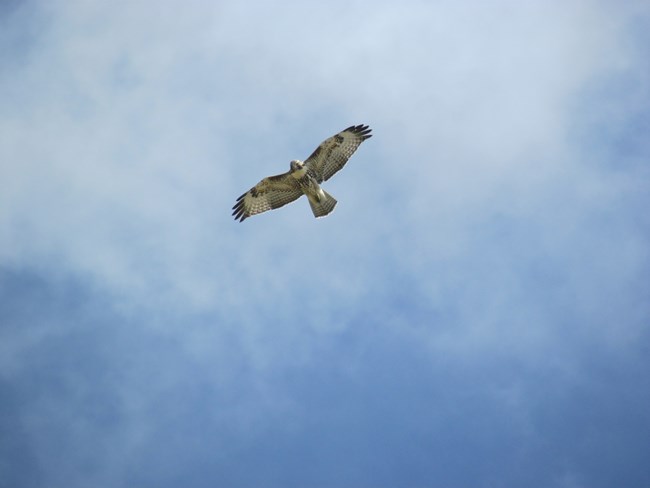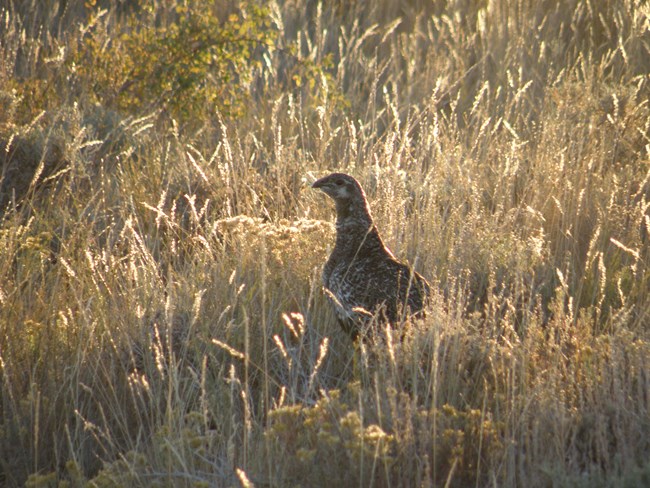
NPS photo Commonly seen birds include: golden eagle, red-tailed hawk, northern harrier, black-billed magpie, common raven, gray jay, green-tailed towhee, sage grouse, mountain bluebird, western meadowlark, Brewer's sparrow, and the American robin. Aspen communities occupy only a small portion of the monument, but sustain the greatest variety of birds (52.7% of all species) of all monument vegetation types. Aspen tend to grow where water is available. They have a structurally complex and diverse community of understory plants that provide food and favorable breeding habitat for a variety of bird species. Birds typically associated with aspen groves in Fossil Butte are the house wren, tree swallow, black-capped chickadee, black-headed grosbeak, orange-crowned warbler, yellow warbler, and the red-napped sapsucker. Fifty percent of the bird species were observed in areas dominated by sagebrush, and 11 species were seen only in sagebrush. Grassland had a slightly lower species richness (38 species) and mixed-conifer habitat had significantly fewer species than sagebrush, providing habitat for only 25% of all species observed. Despite its low species diversity, mixed-conifer had the highest number of obligate bird species (species dependent upon a specific habitat, and rarely seen elsewhere) of any of the monument's habitats. Nearly 44% of the species detected in mixed-conifer forests were observed only in that habitat. The relative number of birds using different habitats differs from species richness. Aspen forests had the highest species richness, yet aspen ranked only third in the numbers of birds (9.28) detected per count unit. The mixed-conifer habitat had the highest numbers of birds per count unit. Serviceberry vegetation had the second highest average number of bird detections (10 individuals per unit counted). The importance of this habitat for birds like the green-tailed towhee, that depend on dense shrubs for nesting, and American robin and western tanagers that eat serviceberries could account for the high numbers of birds observed where serviceberry shrubs are common. Species found most commonly in Douglas fir forests include yellow-rumped warbler, common raven, chipping sparrow, Steller's jay, red-breasted nuthatch and white-breasted nuthatch. Those detected most in mixed conifer include western tanager, mountain bluebird, Clark's nutcracker, and Hammond's flycatcher. 
NPS Photo Check out our fossil birds. |
Last updated: January 31, 2024
